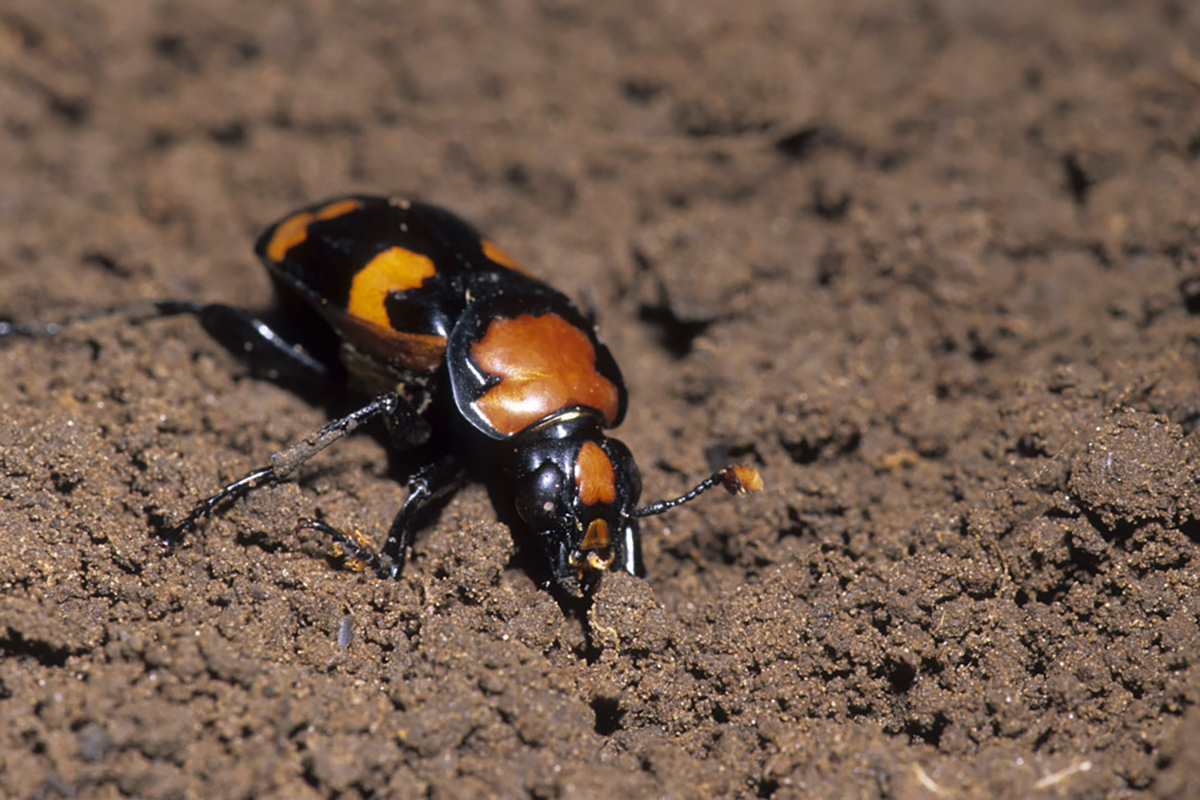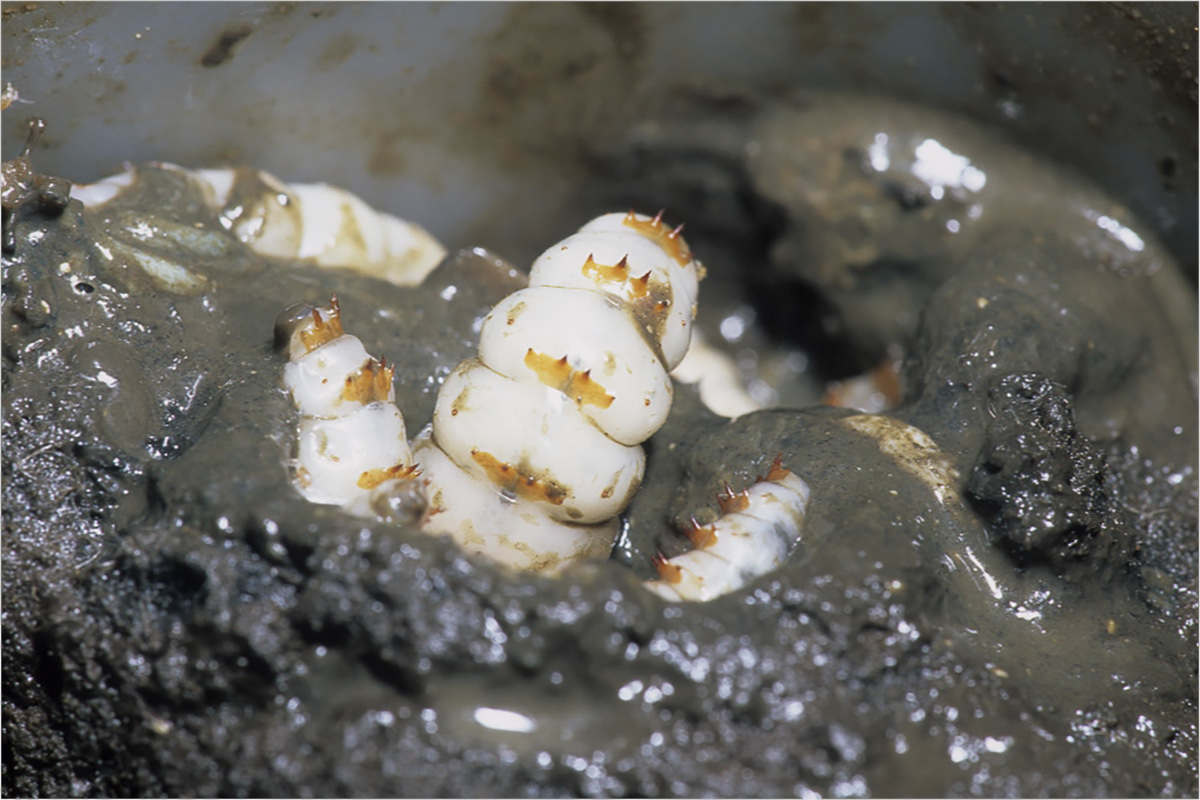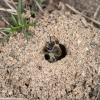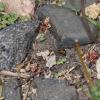A version of this article originally appeared in Farming with Soil Life: A Handbook for Supporting Soil Invertebrates and Soil Health on Farms by Jennifer Hopwood, Stephanie Frischie, Emily May, and Eric Lee-Mäder.
It wouldn’t be Halloween without stories of souls and ghouls traveling between the underworld and the living. Yet for many wildlife, the ground beneath our feet is a welcoming home and very much alive.
A number of beetles contribute significantly to recycling the decaying flesh of dead animals, or carrion, returning nutrients to the soil. Carrion is a small portion of the waste in most ecosystems but has an important role in nutrient cycling because it decomposes at a much faster rate than plant materials, which contain lignin, hemicellulose, and cellulose—all resistant to decomposition. Carrion is also much more nutrient rich than the same amount of plant matter. Decomposing carrion creates small islands of increased soil fertility that can have long-lasting ecological effects.
Of the 31 species of burying beetles in North America, the largest is the American burying beetle (Nicrophorus americanus). At more than 1.5 inches (3.81 cm) in length, adults have shiny black bodies with bright-orange bands on their wing covers, a patch of orange between their eyes, and a dollop of orange on their antennae.

Burying Beetles Live Up To Their Name
Experts at detecting the odor of death, these beetles use their antennae to help them locate small animals within an hour of death from up to two miles away. They specialize in carrion the size of pigeons or small rodents such as prairie dogs or ground squirrels. A breeding pair will get to work right away to prepare the carcass.
If the ground underneath isn’t amenable (these beetles strongly prefer soils with high moisture), the beetles will move the carcass to a preferable site for burial. They will loosen the soil, plowing through it from beneath the carcass, eventually causing the carcass to settle into the ground. After covering the carcass with several inches of soil, the beetles clean off any feathers or fur and work the carcass into the shape of a ball. The female will lay eggs in a depression on top of the carcass ball.
Burying beetles provide their larvae with parental care, which is uncommon in insects. The adults provide predigested carrion to the larvae on request until they have grown enough to feed themselves. American burying beetles are active at night, which prevents competition with the day-active flies that lay eggs on carcasses; the burying of the carcass also reduces competition. Thus, young burying beetles grow up in a relatively safe environment, and their work breaks down the carrion and adds nutrients to the soil. As the carrion is broken down by the beetles, nitrogen, phosphorus, potassium, sulfur, magnesium, and sodium increase in soils underneath.

Protecting Nature’s Gravediggers From Extinction
Once found in 35 states in the eastern and central United States, American burying beetles are now found only in undisturbed habitats (e.g., prairies, forest edges, and scrubland) in Nebraska, Rhode Island, Oklahoma, South Dakota, Kansas, and Arkansas, along with populations that have been reintroduced in Ohio, Massachusetts, and Missouri.
The species was listed as federally endangered in 1989. In 2019, the United States Fish and Wildlife Service proposed reclassifying the beetle as threatened rather than endangered. Causes for the beetle’s decline include habitat loss and fragmentation, a reduction of the small mammals and birds on which these beetles grow, and an increase in competition with larger scavengers (e.g., crows, foxes, and raccoons) that compete for available carrion in disturbed areas. Climate change is now also a threat, since these beetles have a limited ability to tolerate warmer temperatures and changes in soil moisture.
If you’re lucky enough to have burying beetles in your area, you can support these essential animals and the services they provide by protecting wild lands from development, and supporting land management and farming practices that reduce pesticide use.





